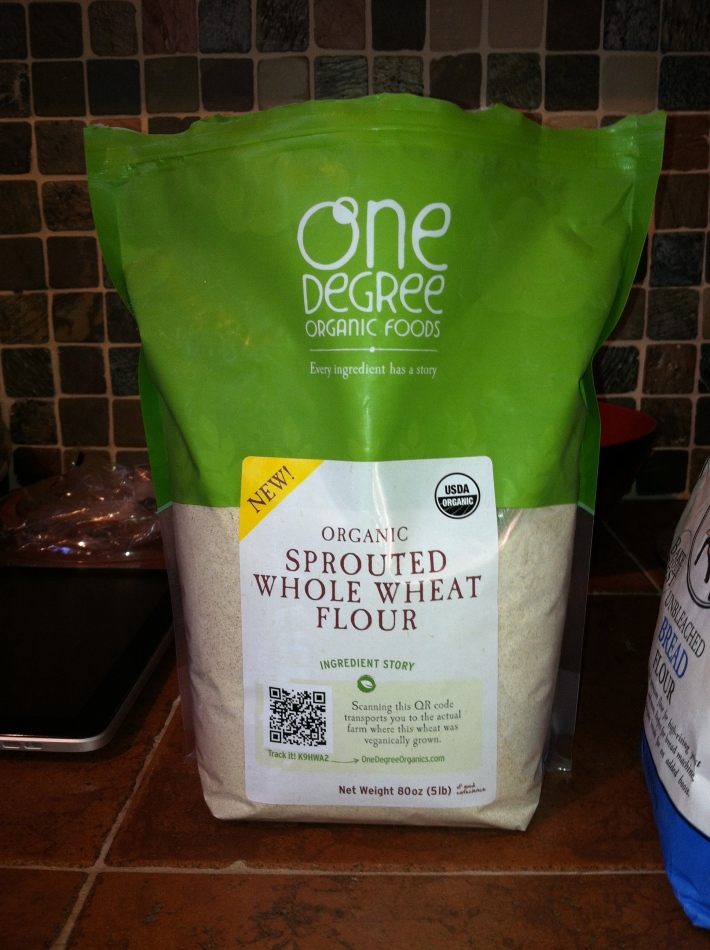Yesterday my Vegan Pledge group went on a field trip to Whole Foods. I usually shop at the Whole Foods in Durham, but the planners for the Vegan Pledge had us meet in Chapel Hill. We toured through the store and learned about different products and got shopping tips. When we hit the baking isle, I was ecstatic to see One Degree sprouted flours. When I say ecstatic, I yelped like a kid in a candy store and immediately grabbed a bag of Sprouted Whole Wheat Flour.
I was so excited to find this flour, I looked for it at Whole Foods in Durham at a food coop and was thinking I would have to order it on-line. Honestly, I think the people in the store thought I needed some medical intervention.
I was even more excited when I learned that One Degree has an idea I love and I didn’t know anyone was doing. I think I love the idea since I wrote about it recently. If you notice in the picture there is a QR code. I almost jumped up and down like someone on the Price is Right when I scanned the code. The clouds cleared, a bright beam of light shone down upon me, and harp music played in the background as I looked on my iPhone to see information about where the wheat in this bag was grown! Imagine that – technology really helping us know how many degrees separate us from the food we eat! So this wheat came from Alberta, Canada, whoops – that is why I say two degrees. That is a long way from me in North Carolina.
But, the good news is it made wonderful bread. I’m thinking about a piece now as an after dinner snack. If you don’t know about it, sprouted grains and flours are healthier, contain more protein, and have lower carbohydrates. The bread is a little chewier than typical American sandwich bread, but it’s so yummy! The bread rose freakishly and sort of looks like an alien life form (see below) but it is tasty and filling. Here’s a picture:
Now, while this bread is kind of ugly, I do want to say one more thing about bread. As readers know, I bake my own bread. But I’ve had a problem, the loaves were lopsided. It turns out the oven wasn’t level. After leveling the oven, my loaves looked better:




